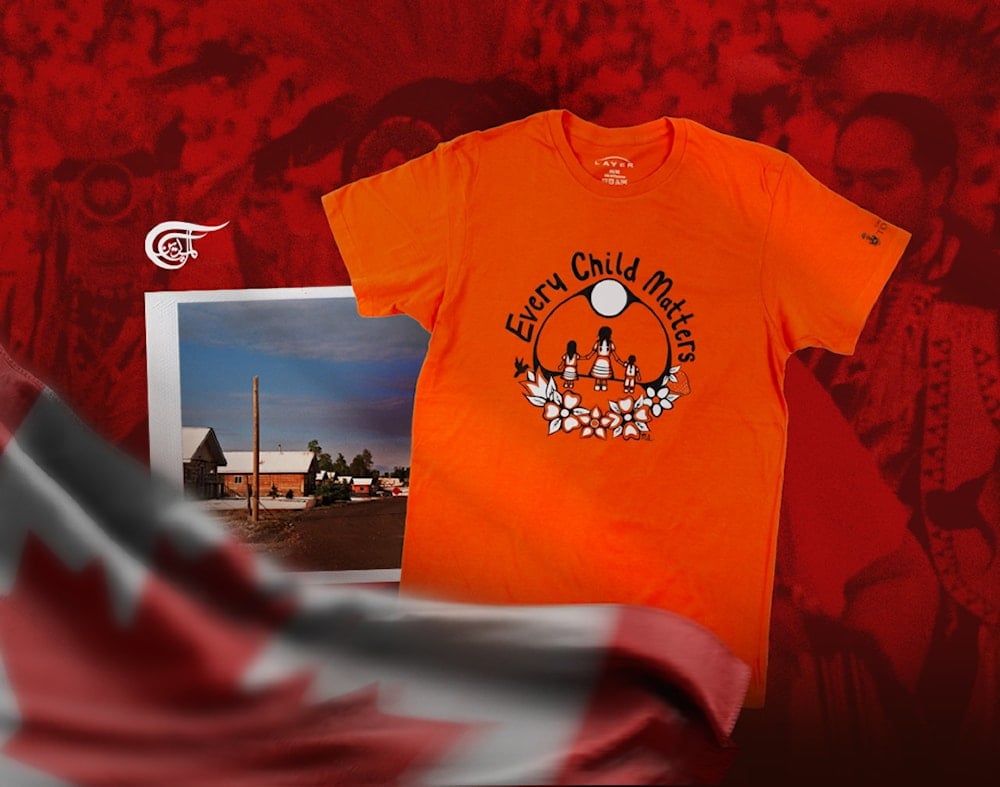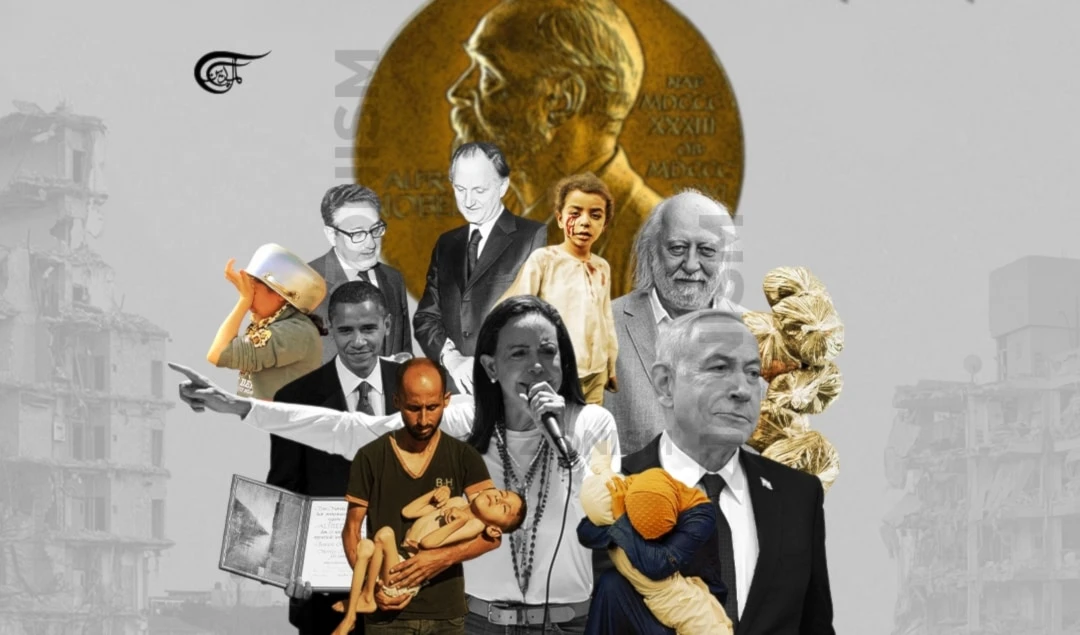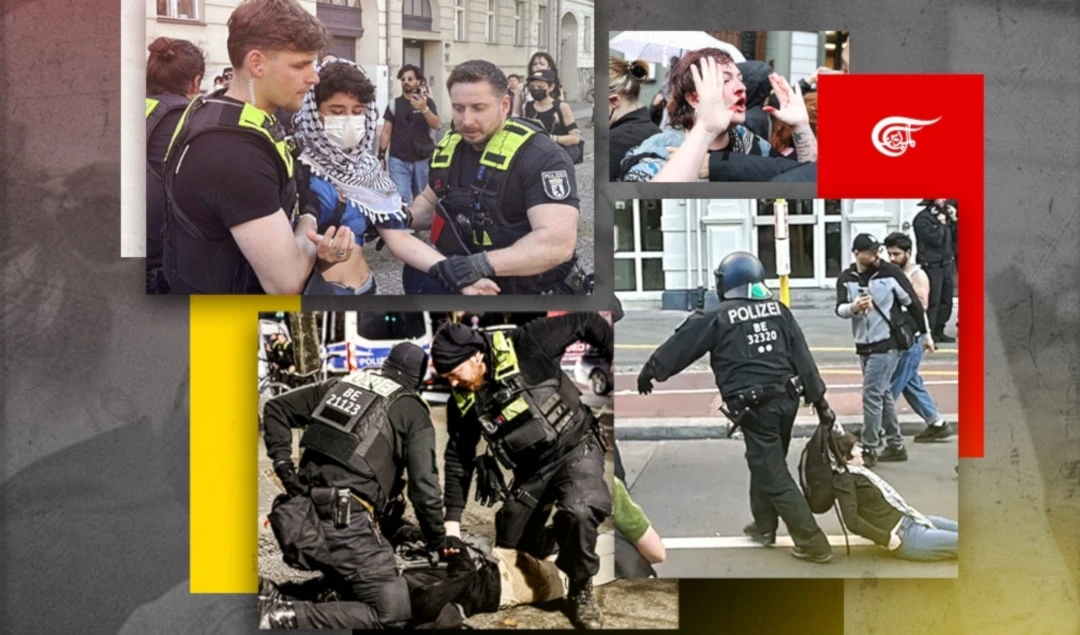Reconciliation in Canada must move beyond gesture politics
In short, reconciliation is meaningless when the colonial epistemologies that underpin the ongoing violence against Indigenous Peoples remain uninterrogated and unchanged.
-

For the Indigenous peoples in Canada, no truth and no justice mean no real reconciliation (Illustrated by Zeinab al-Hajj; Al Mayadeen English)
Each year, September 30 marks Orange Shirt Day in Canada, an Indigenous-led commemorative day designed to honor the victims and survivors of the notorious residential school system.
This network of government-backed religious boarding schools operated between 1831 and 1997 with the goal of forcibly assimilating Indigenous children into Euro-Canadian culture.
Over 150,000 First Nations, Métis, and Inuit children were forced to attend these schools, and it is estimated that thousands of children died in them in what the late Pope Francis, in July 2022, called an act of genocide.
The orange shirt became a symbol of residential school remembrance after Phyllis Webstad of the Stswecem'c Xgat'tem First Nation in British Columbia shared her story of how, at the age of six, her new orange shirt was taken away from her on her first day at the St. Joseph Mission Residential School.
In 2021, the federal government declared September 30 the National Day for Truth and Reconciliation in order to ensure that “the legacy of residential schools remains a vital component of the reconciliation process.”
No reconciliation without truth
That “reconciliation process” couldn’t be any more stalled than it is today.
A decade has passed since the Truth and Reconciliation Commission of Canada published its landmark Final Report following a six-year investigation of the residential school system and made its 94 recommendations for action to address the legacy of the schools.
According to the Beyond 94 monitoring website run by CBC News, which provides detailed status reports on each Call to Action, the status of only 15 out of 94 is marked as “complete” so far.
This abysmal tally after ten years lends further credence to those who say that reconciliation is more symbolism than substance.
Writer and lawyer Michelle Good, a member of the Red Pheasant First Nation in Saskatchewan, attributes the slow reconciliation progress to Canada’s wish to reconcile with Indigenous Peoples without telling the truth about the nation’s genocidal origin story.
In her 2023 book Truth Telling: Seven Conversations About Indigenous Life in Canada, she writes:
“The story of how Canada was created is a fairy tale with little basis in truth. And this faux history continues to be spoon-fed to Canadian children who become the newest beneficiaries of a false narrative about their country. These children then grow into adults who carry on the fallacies necessary to maintain the foundation that perpetuates a grossly disproportionate power dynamic.”
In short, reconciliation is meaningless when the colonial epistemologies that underpin the ongoing violence against Indigenous Peoples remain uninterrogated and unchanged.
Good cites “the wholesale apprehension of Indigenous children by child welfare services” and the Missing and Murdered Indigenous Women and Girls (MMIWG) crisis as examples of present-day embodiments of Canada’s long history of colonial violence.
Violating treaty rights
State-sponsored reconciliation in Canada is reminiscent of the theatrics of self-congratulatory Western nations recognizing Palestinian statehood while continuing to aid and abet "Israel’s" destruction of said state.
On last year’s National Day for Truth and Reconciliation, Ontario’s conservative Premier Doug Ford put out a statement condemning the “terrible legacy of the residential school system," describing it as a “chance to learn…and recommit to true reconciliation, building a better future in partnership with First Nation.”
What Ford understands by “true reconciliation” and “partnership” became glaringly visible nine months later when his government created the legal framework to violate Indigenous land rights at will by passing the controversial Bill 5 (Protecting Ontario by Unleashing our Economy Act) in June.
According to Amnesty International, the pro-extractive industries legislation “empowers the province to designate so-called ‘special economic zones’ that allow the provincial government to bypass environmental regulations, public consultation, and other protection.”
The same month, Ottawa passed Bill C-5 (One Canadian Economy Act), which allows the federal government to fast-track infrastructure and energy projects in the name of “national security”, also with utter disregard for existing Crown-Indigenous Treaty relationships.
First Nations leaders have condemned the government’s failure to uphold its duty to consult, which obliges the Government of Canada to “accommodate Indigenous groups when it considers conduct that might adversely impact potential or established Aboriginal or treaty rights.”
“Despite public commitments to reconciliation and partnership, Bill C-5 was rushed through Parliament in a matter of weeks during summer 2025, leaving little time for dialogue, engagement, or accountability,” say the Chiefs of Ontario, a political advocacy group for the province’s 133 First Nations.
People-powered reconciliation
In light of their government’s unwillingness to take meaningful steps toward true reconciliation, Canada’s non-Indigenous communities need to take matters into their own hands.
In his 2025 book 52 Ways to Reconcile: How to Walk with Indigenous Peoples on the Path to Healing, David A. Robertson, a member of the Norway House Cree Nation in Manitoba, lists a host of weekly activities that ordinary Canadians can pursue over the course of a year so that they can “contribute to fixing the mess that has been made”, that mess being colonialism and its lasting impacts.
These activities include everything from reading Indigenous books and watching Indigenous TV shows to supporting an Indigenous business, attending a Powwow, and mentoring Indigenous Youth.
In lieu of government action, there is a dire need for this kind of people-powered, truth-centric reconciliation.
This should not absolve the Government of Canada of its responsibility, of course, from which Good demands not apologies, but an “acknowledgment of the harm that’s been done” and no less than “full and proper restitution.”
Only when reconciliation engages in quantifiable deeds with tangible results will it move beyond empty gesture politics and gain the substance needed to foster collective healing.

 Timo Al-Farooq
Timo Al-Farooq
 6 Min Read
6 Min Read









